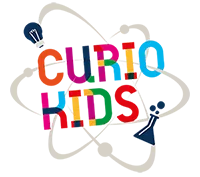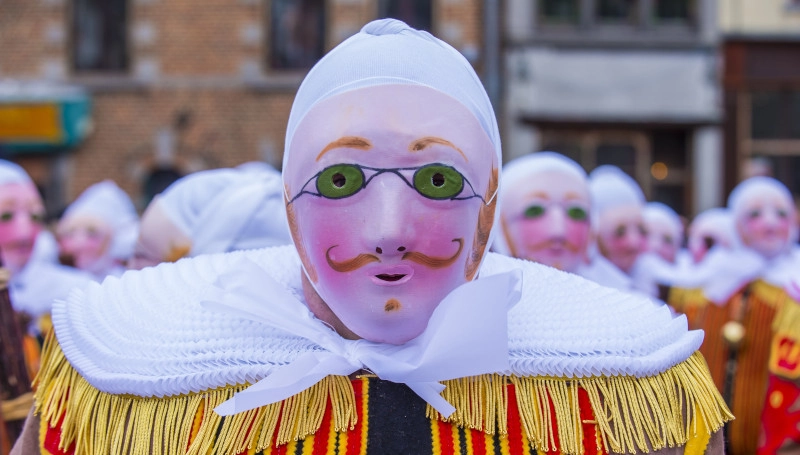
The Gille is the most important character in the carnival of Binche, a village located in the Province of Hainaut in Belgium. We can easily recognize him by his orange suit, his big white feathers that he wears on Mardi Gras on his head, and by his mask, his mustaches and red favorites, green glasses! But how are these masks made?
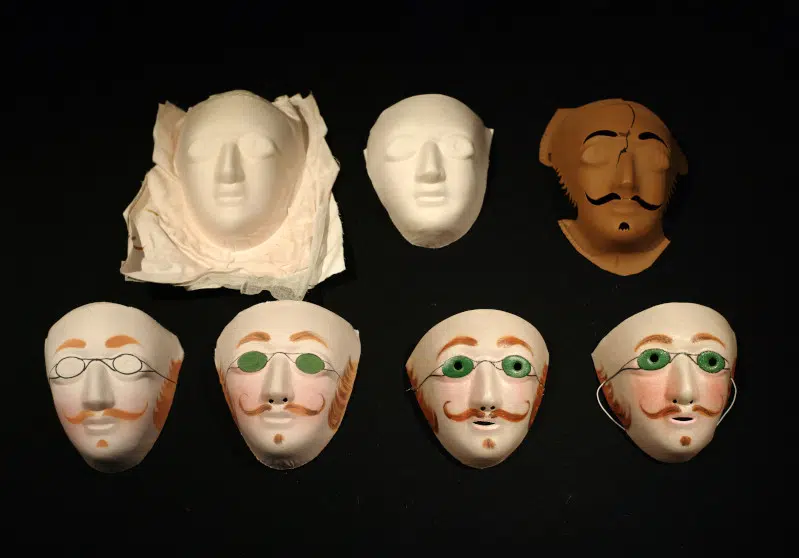
Credentials : International Carnaval and Mask museum
An artisanal tradition perpetuated by an enthusiast in a Binchese attic.
The masks worn by the Gilles are recognizable worldwide. According to the tradition reported by an ancient manuscript of the 18th century, the Gille always came out masked at the Carnival.
Until the Second World War, the masks were made in Switzerland and Germany. It was later that they were made in France in the region of Saumure. The company even used plastic for its manufacture. Until a resident of Binche decides to make it himself in accordance with tradition.
Jean-Luc Pourbaix is a designer and sculptor from Binche. Very attached to his Folklore, he decides to make the masks in Binche, we are in the 70s. It will take him a year to find the proper technique.
Cotton and wax, here are the raw materials at the base of the Gille de Binche mask.
After having groped, he finally solved the problem of manufacturing Gille’s mask while ensuring Binchois perfect respect for the characteristics of the mask.
To make them, he glues three squares of cotton canvas of 40 cm side and places them between two molds. Two whites and one pink for skin color. It is by pressing them at high temperatures to give them their final shape. Thanks to the glue which freezes the shape and the heat which allows to dry faster.
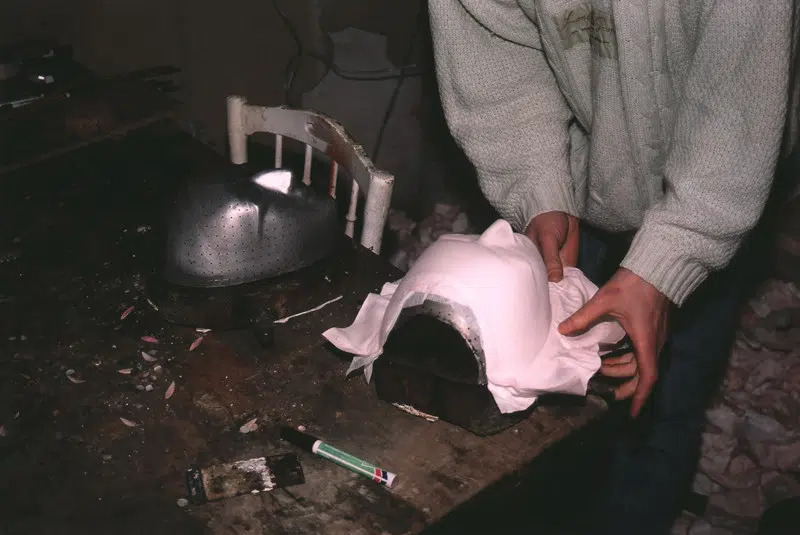
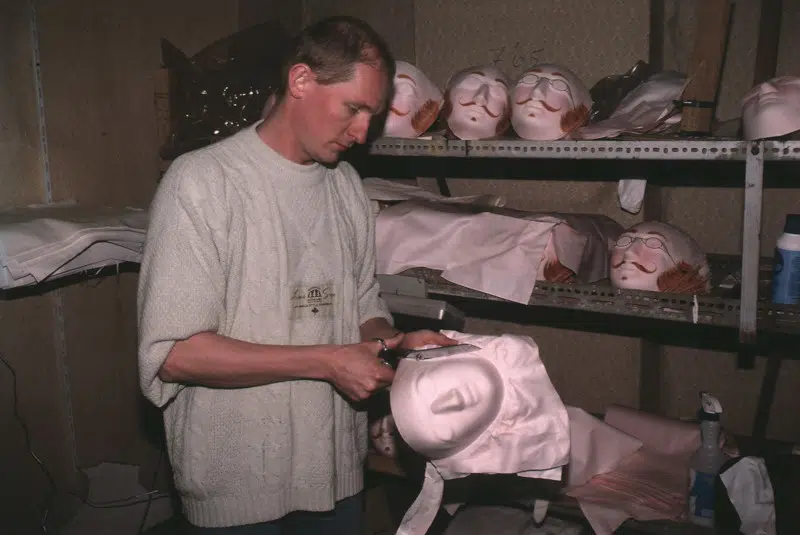
Once dry, he uses paint on a stencil to draw the Napoleon III type mustaches, sideburns and thick, reddish eyebrows. It is by hand that he finishes touching up with a precise and elegant gesture. And he finishes with the famous green glasses to give the Gille a little intellectual air.
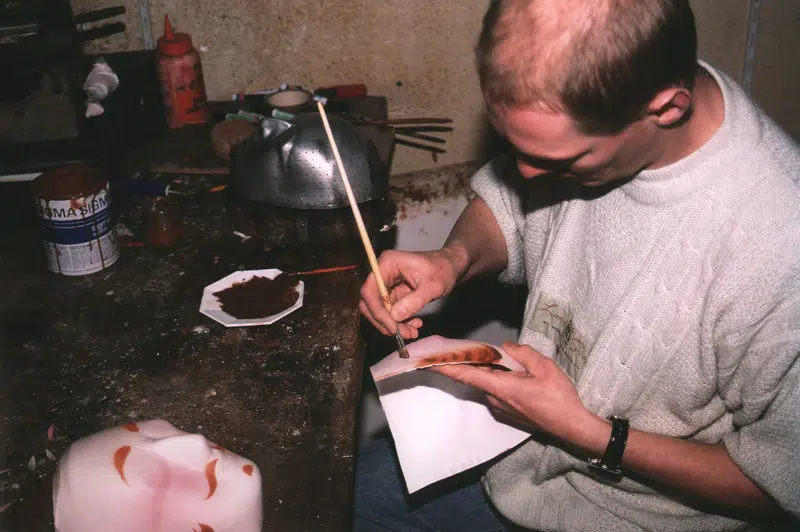
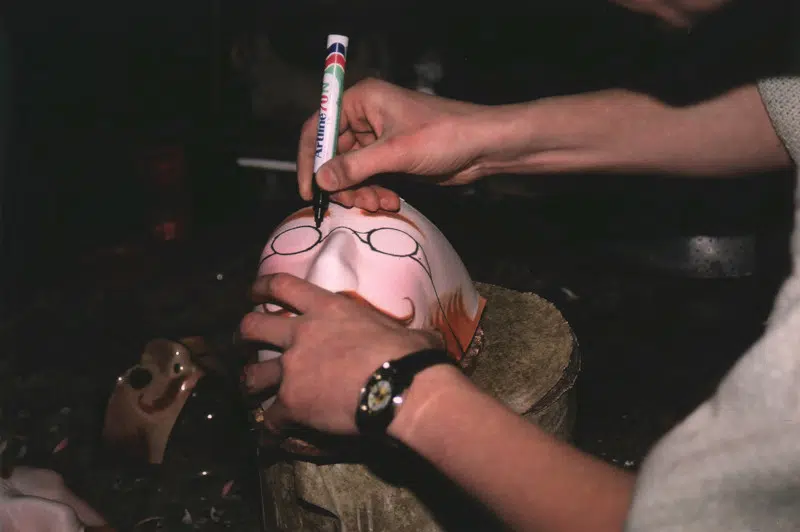
The painted mask is dipped in wax, also called paraffin, to solidify the mask and waterproof it (protect the mask from humidity). Then the masks take a last bath in water to make the wax shine and give it its exceptional varnish.

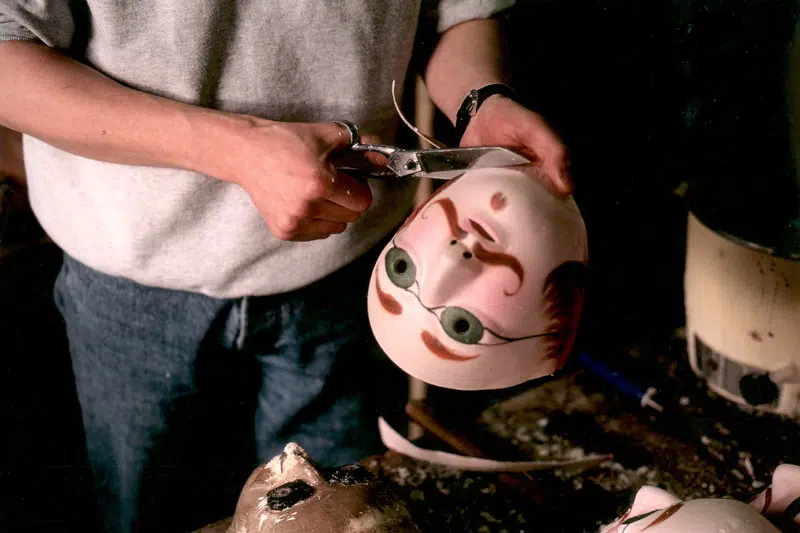
During the carnival period, the Gilles wear the mask, only at the end of the morning.
It is a mixture between tradition, crafts, and love that still allows Binchois to benefit from this unique and symbolic mask.
The mask has been protected by the European Patent Office since 1985. This means that we are not allowed to copy them in other workshops.
Did you know?
In 5 months, the craftsman Christophe Pourbaix manages to produce 400 masks by hand!
Today, the Binche Carnival has been protected by the oral and intangible heritage of humanity by UNESCO since 2003.
